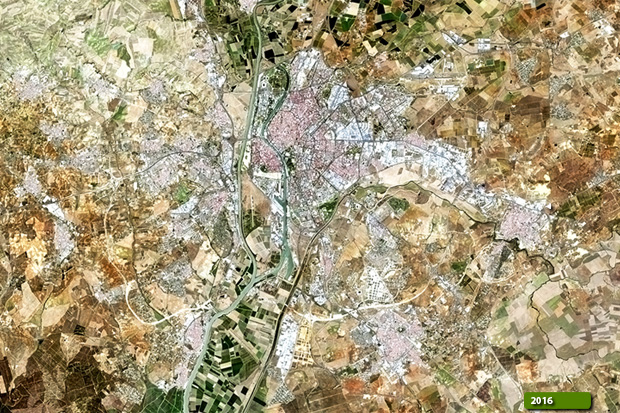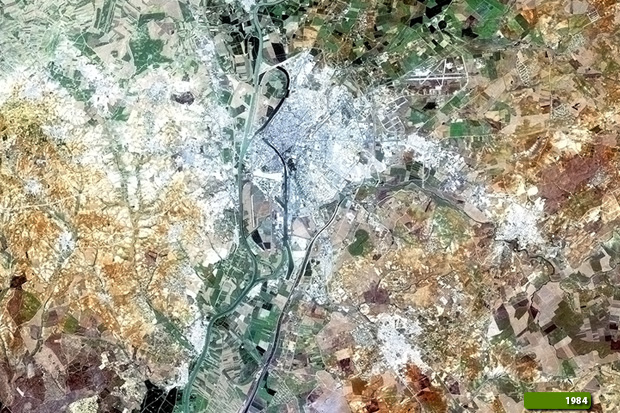|
Seville, Spain
Seville is the capital and largest city of the autonomous community of Andalusia and the province of Seville, Spain. It is situated on the plain of the River Guadalquivir. The inhabitants of the city are known as sevillanos (feminine form: sevillanas) or hispalenses, after the Roman name of the city, Hispalis. Seville has a municipal population of about 703,000 as of 2011, and a metropolitan population of about 1.5 million, making it the fourth-largest city in Spain and the 30th most populous municipality in the European Union. Its Old Town, the third largest in Europe with an area of 4 square kilometres, contains three UNESCO World Heritage Sites: the Alcázar palace complex, the Cathedral and the General Archive of the Indies. The Seville harbour, located about 80 kilometres from the Atlantic Ocean, is the only river port in Spain. Seville is also the hottest major metropolitan area in Europe, with summer average high temperatures of above 35 °C. Seville was founded as the Roman city of Hispalis. It later became known as Ishbiliya after the Muslim conquest in 712. During the Muslim rule in Spain, Seville came under the jurisdiction of the Caliphate of Córdoba before becoming the independent Taifa of Seville; later it was ruled by the Muslim Almoravids and the Almohads until finally being incorporated into the Christian Kingdom of Castile under Ferdinand III in 1248. After the discovery of the Americas, Seville became one of the economic centres of the Spanish Empire as its port monopolised the trans-oceanic trade and the Casa de Contratación (House of Trade) wielded its power, opening a Golden Age of arts and literature. In 1519, Ferdinand Magellan departed from Seville for the first circumnavigation of the Earth. Coinciding with the Baroque period of European history, the 17th century in Seville represented the most brilliant flowering of the city's culture; then began a gradual economic and demographic decline as silting in the Guadalquivir forced the trade monopoly to relocate to the nearby port of Cádiz. The 20th century in Seville saw the tribulations of the Spanish Civil War, decisive cultural milestones such as the Ibero-American Exposition of 1929 and Expo '92, and the city's election as the capital of the Autonomous Community of Andalusia. More information is available on Wikipedia

Our tour today stops over the city of Seville, located in southern Spain. It is the capital of Andalusia Region and of Seville Province, and a port on the Guadalquivir River. The port is accessible to ocean-going ships. Among the city's exports are wine, olives, oranges, and metal ores. Industries include fish canneries, distilleries, and the manufacture of iron, porcelain and earthenware, tobacco, textiles, soap, and furniture. Tourism is an important part of Seville's economy. This Landsat 5 and 8 satellite image merge, acquired with a time window (before/after) of thirty-two years, aims to show the large urban development that the city has experienced from 1984 until today. In the comparison, we can see the urban development of the city, particularly in the central part, along the bank of the Guadalquivir River. Another aim of these images is to promote the opportunity to download Landsat data through the ESA portals, where images captured every day are made available in near real time to the users and the scientific community. Landsat full resolution data products are freely available for immediate download at:  View Landsat 5 TM high resolution image (JPG 1.3 MB) View Landsat 8 OLI high resolution image (JPG 1.2 MB)
|
|||||||||||||||||||||

